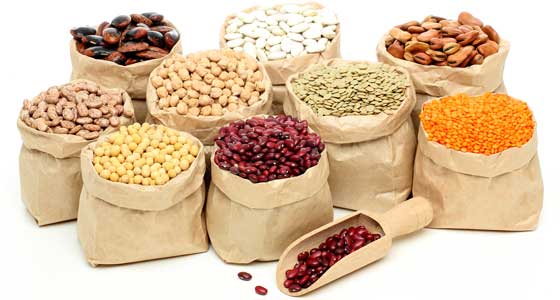FAO Continues Pulse Promotion Efforts
GLOBAL INSIGHTS (Online Exclusive)

Could pulses be a key factor in ending world hunger? With plans in place to promote pulses as a sustainable crop and healthful food, the FAO hopes so.
Pulses are chock full of valuable nutrients and offer product developers plenty of food formulating functionalities (see this month’s Ingredients column for details). But did you know that these small edible seeds are also a valuable contributor in improving food security and nutrition around the world?
That’s the thought of officials from the United Nations Food and Agriculture Organization, who met in February to celebrate how the FAO’s International Year of Pulses, which is what FAO dubbed 2016, has met the goal of raising awareness of the value of pulses around the world. This includes recognizing the progress made in increasing the shared knowledge about the production, trade, and consumption of pulses.
“Training programs on the value of pulses should be supported, particularly for schoolchildren, farmers, and extension workers,” said Maria-Helena Semedo, FAO’s deputy director-general, in a press statement (FAO 2017). “Policies and programs should focus more on pulse producers, particularly small-holder farmers, and young people.” The officials also want to capitalize on this momentum to further support the organization’s sustainable development goals, specifically the goal of achieving zero hunger.
The goal, which obviously aims to end hunger, also tackles issues such as improving food security and nutrition and promoting sustainable agriculture. With regard to sustainable agriculture, growing pulses requires less water than other protein sources. Pulses also add nitrogen to soil and can grow in very poor soil conditions. These factors can make pulses attractive crops to grow, especially for farmers in developing countries who often have limited resources. Of course, for these farmers, growing pulse crops means a source of income as well as access to a highly nutritious food product to use to feed their families and local communities.
To really highlight the potential of pulses, though, requires promoting their production, consumption, and value chain development, according to an FAO Food Security and Nutrition Forum brief (FAO 2016). This involves turning to social media, health officials, and nutritionists to spread the word about the health and nutrition of pulses, investing in product development innovations that utilize pulses in formulations, and investing in research and development to improve productivity and enhance plant-breeding methods. It also means finding ways to include pulses in food aid programs, improve networks that link the different organizations along the pulse value chain, and provide information about seed varieties and crop methods that are better suited to certain local conditions. The FAO plans to work with everyone from government officials to small family farmers to continue the work started in 2016 in the hope of raising awareness of the important role that pulses can play in helping to eradicate hunger.
 Karen Nachay is senior associate editor of Food Technology magazine ([email protected]).
Karen Nachay is senior associate editor of Food Technology magazine ([email protected]).
References
FAO. 2017. “International Year of Pulses Closes with Call to Build Upon Strong Momentum.” Press release, Feb. 10. Food and Agriculture Organization of the United Nations, Rome, Italy. fao.org.
FAO. 2016. Pulses for Food Security and Nutrition: How Can Their Full Potential be Tapped? Global Forum on Food Security and Nutrition Brief. Food and Agriculture Organization of the United Nations, Rome, Italy. fao.org.
